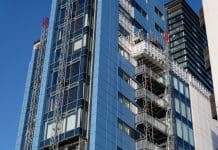Ian Streets of About Access discusses accessibility requirements during the planning stage.
In planning and designing a new building, sometimes it helps to reverse the process.
Imagine a completed building, look at who it’s for and what it does, and consider how much better and more cost-effective it would have been if all the facilities had been installed in the right order.
For example, it would be nonsense to aim to fit out the upper floors of a property before you’ve put the stairs in. Nor would you install stairs so steep that only a mountaineer could negotiate them.
You would adopt best practice and good design principles, and for best results you would do that from the outset; committing to inclusive design at the procurement stage and resisting any attempts to renege on that promise as the project progresses.
The concept of accessibility throughout the procurement process is not necessarily covered by legislation or guidance. There are requirements for accessibility, but it is often left to the practitioners to decide the most appropriate way of meeting them.
The Design Council, a charity which is recognised as a leading authority on the use of strategic design, promotes the development of inclusive environments that work better for everybody. It emphasises that the inclusive approach should be adopted at the planning, design and management stages, and it should accommodate the differences in the way people use facilities and services.
The first of the Design Council’s five principles of inclusive design is to place people at the heart of the design process, and that extends into acknowledging diversity and difference – faith or religion can influence a physical design.
You should offer choice where a single design solution cannot accommodate all the users, for example installing urinals and wash basins at different heights. You would also enable flexibility of use, with furniture that is not fixed and that can be rearranged to accommodate the needs of the users.
The overall aim is to provide buildings and environments that are convenient and enjoyable for everyone to use. Some shopping centres have quiet rooms with no background noise. If a parent is with a child who is struggling with the environment they can take them into the quiet room and that makes it better for everybody.
A sensible approach is to set out to design a building that can be used by everyone, including children and adults, people with and without impairments, different genders and sexual orientations, different ethnicity and culture. Everyone benefits, and you identify the requirements of the different user groups by including them, or their representatives, in your consultation.
Achieving an inclusive environment is the responsibility of everyone who works on a project at every stage, from those who commission a new building to the planners, designers, engineers and surveyors. It extends to the property owners and their various managers, such as the interior designers in delivering the look and feel of the space, and the facilities managers charged with maintaining the property.
All too often the accessibility and inclusivity issues are left until the planning application and detailed design stages, a reactive approach which can lead to compromise to compensate for missed opportunities.
The commitment to delivering accessibility can be particularly vulnerable at the budget and construction phases, when calls for value engineering are at their loudest. Value engineering can too easily become a euphemism for cost cutting, but another definition might be delivering more for a fair price and getting it right first time.
With so much good advice available it is much better to be proactive, anticipating and addressing any issues in advance rather than going back and having to make changes. There is no value in having to pay extra for something which was missed out of the original plan.
Case study
There is guidance within BS8300 covering the provision of wheelchair spaces for an audience in an entertainment venue, and it is not limited to numbers. Seating allocated to disabled people should be on a direct route, free from obstructions and located so that it is easily identifiable by blind and partially-sighted people. Other factors are sight lines and lighting, which are particularly important for people with hearing impairments trying to follow a signed performance.
If you want to know more, or you have a question or concern, please contact us at info@aboutaccess.co.uk













